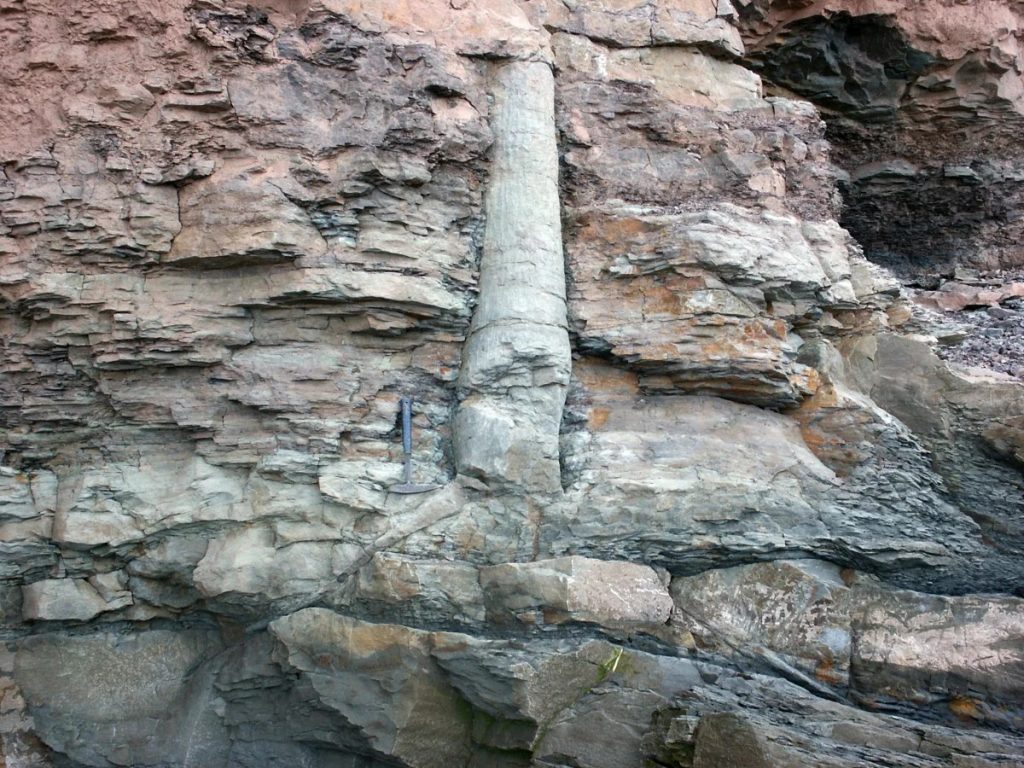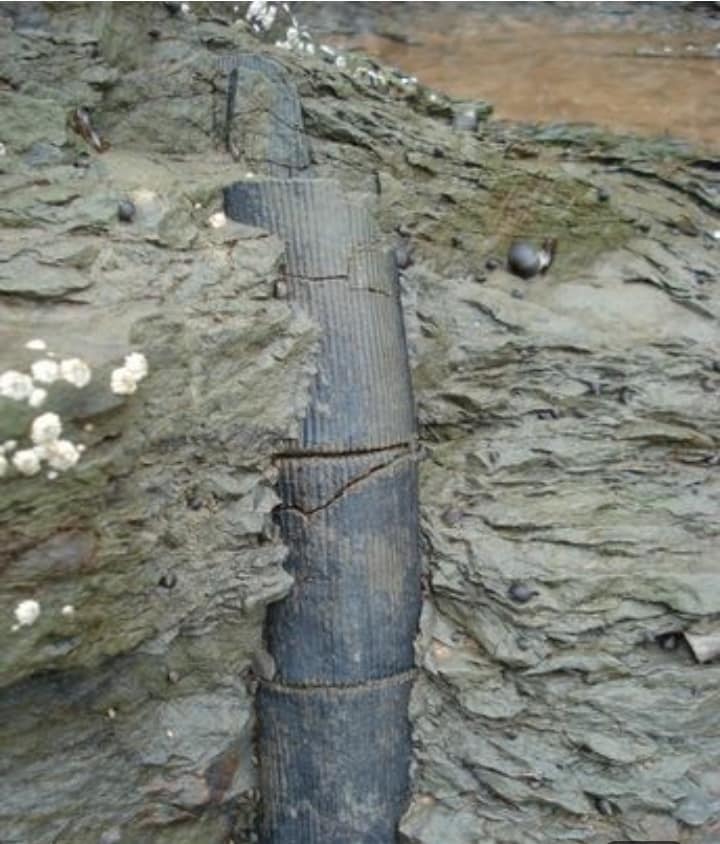Who created metal pipes in Tibet more than 150,000 years ago?

Secrets of the world:
The Tibetan White Mountain contains a network of metal structures that extend to the nearest lake. Many researchers believe that this is an artificially created piping system
Mysterious pipelines reach up to 150 thousand years! So at a time when Neanderthals and Stone Age people still lived in Europe and Asia, thousands of years on bronze.
Traces of settlement in the area around the mountain, not older than 30 years. Who could make metal pipes in uninhabited mountains?

There are three caves at the foot of Baigongshan Hill. Two of them have collapsed and are inaccessible, but the biggest is the destination of many tourists. The cave seems to have been artificially created.
Above the cave, a massive pipe with a diameter of about 40 centimeters, which floats from the stone, is reinforced. There is also an empty pipeline at the bottom of the cave, unfortunately only the upper surface of the pipeline is visible.

At the entrance to the cave you can see several other pipes with a diameter of 10 to 40 centimeters. ” About 80 meters from the cave is Lake Tawson, where there are many scattered pipes. . Undoubtedly the color of the rust says they are made of metal. And their creators had an advanced method of assembly. The purpose of the pipeline is also not entirely clear. It would be quite difficult to pass water through them.
Scientists dealing with unusual formations who are trying to find a reasonable explanation. According to one of the most frequently exchanged theories, these are fossil trunks of prehistoric trees, others because the pipelines were formed during floods.
However, these statements contradict the color, which indicates the presence of iron.
Isotopic analysis of the material revealed that there were nothing extraterrestrial and microstructural tests on it – that they were not performed by human hands.

Testing of samples of piping materials taken from the rock surface, t. j. from places without air, revealed the presence of plant remains that have changed This explains the process of forming baigun pipes.
Trees used to grow here, then they threw themselves on sedimentary rocks. When the wood was reborn, iron-rich water penetrated the natural cavity between the tree and the rock, gradually enclosing it in a “natural iron shell” during the Charcoal, which changed over time by trees, wound on the surface and was preserved and discovered in rocky soil

The events took place millions of years ago. This means that earlier estimates of pipeline time were too young.
Similar artifacts are known around the world and from other places, such as the Colorado Plateau. The tubes have a diameter of 50 cm to 1 centimeter or less, depending on which branches and trunks have undergone the shell coating process. Something similar was found in Louisiana (USA). In this case, the diameter reaches 70 cm.














